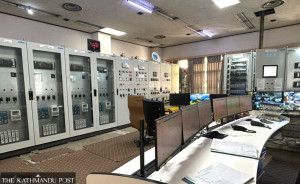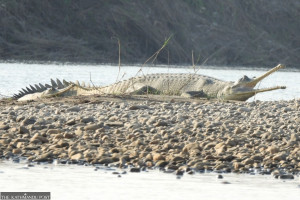Bagmati Province
All wild buffaloes shifted to Chitwan National Park in 2017 are now dead
The last three of them were killed in a tiger attack on Monday.
Ramesh Kumar Paudel
On January 27, 2017, two wild water buffaloes from Koshi Tappu Wildlife Reserve were released to the grassland of Padampur, in Chitwan National Park, with much fanfare, marking the beginning of the government’s translocation drive. In the following weeks, thirteen more wild water buffaloes (Bubalus arnee), locally known as Arna, were translocated to Chitwan. But nearly six years later, none of those bovines remain alive, with the government drive proving to be a disaster.
Twelve of the bovines were translocated to Chitwan from Koshi Tappu Wildlife Reserve and three others were brought from the Central Zoo. They were housed in a 30-hectare enclosure at a grassland in Padampur.
Two of the buffaloes brought to the enclosure died in floods the same year they were brought. Then last year, ten of the remaining 13 animals died one after another, according to Ganesh Prasad Tiwari, information officer at the Chitwan National Park.
After tiger(s) preyed on three buffaloes on Monday, the enclosure is now without wild water buffaloes.
The government had decided to translocate 15 bovines in Chitwan to create a new alternative habitat for the endangered species that are enlisted on the International Union for Conservation of Nature Red List.
The Arnas were brought with the financial assistance of USAID Nepal and technical support of the National Trust for Nature Conservation. As per the report that was made public then, the government spent Rs 3.4 million to set up enclosures and additional Rs 4.5 million for the translocation process.
Floods in the Rapti river and other streams that pass through the country’s first national park wreaked havoc in Padampur area in July, 2017 that killed two wild water buffaloes and left many others diseased. Three Arnas translocated from the Central Zoo had died before the floods. After the floods, tiger attacks became another threat to Arna conservation.
However, conservationists and nature lovers were elated after the translocated wild water buffaloes gave birth to the calves in their enclosure in Padampur. According to Tiwari, who is also the assistant conservation officer at the national park, seven calves were born ever since the Arnas were brought to Chitwan.
Baburam Lamichhane, chief at Sauraha office of the National Trust for Nature Conservation, said the translocation of wild water buffaloes became unsuccessful mainly due to floods, tiger attacks and long confinement in the enclosure.
According to him, the Arnas were not brought to be kept in the enclosure for a long time. “The plan was to release them in the open space of the national park forests after their number reached 20-22,” Lamichhane said. “But the number never reached the target. The translocation was not successful as expected as they were kept in the enclosed place for a long time.”
According to him, six wild water buffaloes were killed by tigers at different times, a calf was swallowed by a python while the others died of various diseases.
Chitwan National Park—which is home to large animals like elephants, one-horned rhinos and tigers among others—however, is not a native habitat for wild water buffaloes. Historians say that wild water buffaloes were spotted in Chitwan till 1951. The wild water buffaloes are currently found only at Koshi Tappu Wildlife Reserve in the country.
According to the latest count held in 2021, the number of wild water buffaloes inside the Koshi Tappu Wildlife Reserve is 498. The figure is 13 percent higher than the previous count of 2018. The wild water buffaloes were translocated to Chitwan with aims to expand their habitats.




 13.12°C Kathmandu
13.12°C Kathmandu1.jpg)













